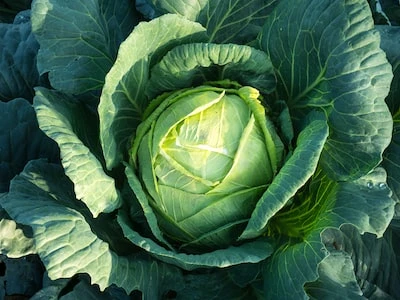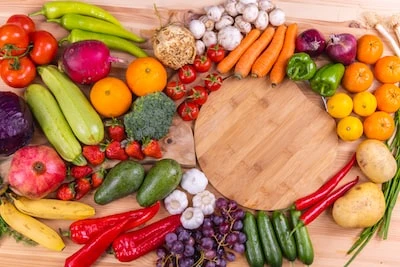Simplest and best strategies
One of the simplest and best strategies to keep a healthy weight is to eat a balanced diet rich in vegetables.
Many veggies have low caloric values by nature but are abundant in water and fiber, which can help you feel fuller for longer. Vegetables are also a great source of vitamins, minerals, and other healthy plant chemicals that can fight off chronic illnesses and reduce inflammation.
The greatest veggies to include in your diet to aid in a safe and long-lasting weight loss journey are listed below.
Table of Contents
1. Asparagus

Even though asparagus tends to make your pee smell odd, if you want to lose weight, you should consume more of this vegetable.
Asparagus is high in fiber and has very few calories. 3.6 grams of fiber and 40 calories are included in one cup of cooked asparagus.
Fiber is crucial for weight loss since it digests slowly and makes you feel fuller for a longer period of time. Since you won’t feel deprived, you’ll naturally consume fewer calories. Additionally, fiber promotes a healthy digestive system and maintains regular bowel motions.
Asparagus can be eaten either raw or cooked. It goes well with practically any meal and tastes fantastic whether grilled or steamed.
2. Brussels Sprouts

Brussels sprouts, like other cruciferous vegetables, have a high fiber content and few calories. Cooked Brussels sprouts include only 56 calories per cup and 4 g of fiber.
According to one study, cruciferous vegetables were associated with a daily weight loss of about 0.68 pounds over a four-year period.
Cruciferous vegetables also contain glucosinolates, a class of phytochemicals. These substances’ anti-inflammatory and antioxidant qualities may aid in lowering the risk of cancer, heart disease, and other chronic illnesses.
Roasted Brussels sprouts with a sprinkle of olive oil, sea salt, and pepper make a satisfying side dish.
3. Spinach

Spinach is a low-calorie, hydrating, and nutritious vegetable with a water content of about 91%.
With only 20 calories, three cups of raw spinach offer 2 grams of fiber and 2.5 grams of protein. Over 300% of the daily value (DV) for vitamin K, 28% of the DV for vitamin C, and 47% of the DV for vitamin A are also included in a three-cup dose.
According to one study, eating spinach daily was associated with a four-year weight decrease of about 0.52 pounds per serving.
One of the most adaptable leafy greens is spinach, which can be used in salads, smoothies, and sautéed dishes as sides.
4. Cauliflower

In recent years, cauliflower has gained popularity as an ingredient in a variety of meals, frequently used as a substitute for mashed potatoes, rice, and pizza crust.
For only 29 calories, one cup of cooked cauliflower has about 2 grams of protein, 2.9 grams of fiber, and 61% of the daily value (DV) for vitamin C.
This cruciferous vegetable is also rich in plant sterols and stanols, which are essential for improving endothelium function and lowering levels of bad cholesterol.
Raw, roasted, or steaming are all acceptable ways to prepare and consume cauliflower. To create a healthier, lower-calorie cauliflower rice blend, you may even combine cauliflower rice with white or brown rice.
5. Carrots

A delicious crunch and low calorie snack are carrots. They also contain natural sugars, which can give food a delicate, sweet flavor.
3.4 g of fiber are included in one cup of raw carrot slices, which only has 50 calories.
A 2021 study connected regular carrot consumption with lower incidences of obesity and a lower body mass index (BMI).
Carrots are also a good source of the antioxidants carotenoid. Higher blood levels of beta-carotene have been linked in studies to a lower risk of type 2 diabetes, cancer, and mortality.
Snack on sliced carrots with hummus or a Greek yogurt dip for a low-calorie, filling snack.
6. Bell Peppers

A flexible supplement to a balanced diet is a bell pepper. They include lots of nutrients, such as fiber and vitamin C, and little calories.
With only 39 calories, one cup of raw red peppers has 3.2 grams of fiber and more than 400% of the daily value (DV) for vitamin C.
Short-term increases in BMI have been associated with increased vitamin C consumption. But further research is required to prove a definitive link between vitamin C and weight loss.
For texture and taste, add raw peppers to salads or sandwiches or dip them in hummus or Greek yogurt. Additionally, you can make fajitas by putting chicken breast, onions, and bell peppers on heated tortillas.
7. Zucchini

Cooked zucchini has just 27 calories per cup and 2 grams of protein and 1.8 grams of fiber. This makes it a fantastic vegetable to include in your diet in order to lose weight.
The antioxidants lutein and zeaxanthin, which are known to support healthy eyesight and lower the risk of numerous forms of visual impairment, are also present in zucchini.
Due to its adaptability, zucchini is simple to include in stir-fries, casseroles, and pasta dishes. To reduce the amount of calories and carbohydrates in many dishes, you may also use zucchini noodles, often known as zoodles.
8. Green Beans

Including green beans in your diet can help you lose weight effectively. Cooked green beans have 37 calories, 2.2 grams of protein, and 3.8 grams of satiating fiber per cup.
Fresh or frozen green beans should be roasted in the oven for around 25 minutes after being drizzled with garlic, olive oil, and pepper.
Be aware that green beans in cans frequently include high levels of salt, which can raise blood pressure. To lower the sodium content of canned green beans, rinse and drain them or buy low-sodium variants.
9. Cabbage

The cabbage soup diet, which is consuming just cabbage soup for a week, may be something you’ve heard about. Although there isn’t any conclusive data to back up the usefulness of this diet for long-term weight loss, this cruciferous vegetable has a place in a balanced diet.
Shredded, cooked cabbage has only 35 calories per cup and 2.8 grams of fiber and 2 grams of protein.
Cruciferous vegetables like broccoli and cabbage may lower the risk of cardiovascular disease, according to some research.
Eat your cabbage grilled, roasted, sautéed, steamed, or grill-style. Additionally, cabbage can be used to make fermented kimchi, which has been connected in human studies to anti-obesity effects.
10. Edamame

Despite having a few calories more than most other vegetables, edamame is a fantastic source of protein and fiber, making it a satisfying snack option.
Edamame pods that have been shelled include 188 calories, 8 grams of fiber, and 18 grams of protein per cup.
By enhancing satiety hormones and raising daily calorie expenditure, protein can help you lose weight. Additionally, it stops the loss of muscle mass that occurs after weight loss, which keeps your metabolism at a high level. High-protein diets have been associated in studies to weight loss, the reduction of obesity, and the prevention of disorders linked to obesity.
For a delightful snack, roast edamame or add them to salads and stir-fries. Edamame can also be consumed steaming right from the pod.
11. Beets

Beets are low in calories and high in a variety of nutrients that can help you stay healthy, despite being frequently ignored.
75 calories, 2.9 grams of protein, and 3.4 grams of fiber are found in one cup of cooked beets.
Beets are a fantastic source of dietary nitrates, which the body transforms into nitric oxide. Nitric oxide helps to enhance circulation and reduce blood pressure by relaxing and expanding your blood vessels.
Nitric oxide production is increased during activity, which may enhance exercise performance by increasing the transport of oxygen and other nutrients to muscles.
Additionally, beets contain strong antioxidants called betalains, which may guard against obesity, heart disease, cancer, and other chronic diseases linked to free radicals and inflammation.
Beets have several health advantages, so eat more of them eating them raw, baking, or adding them to salads.
12. Broccoli

The cruciferous vegetable broccoli is frequently eaten steamed, raw, or sautéed. In addition to having few calories, broccoli also has a fair amount of protein and fiber.
With only 55 calories per cup, cooked broccoli provides 5 grams of fiber and 3.7 grams of protein. Broccoli is rich in folate, which is essential for fetal growth during pregnancy, as well as vitamins C and K.
Broccoli also has vitamins, minerals, and phytochemicals that can lower inflammation, promote heart health, enhance bone health, and even guard against some types of cancer.
13. Sweet Potato

If your aim is weight loss, sweet potatoes can be a healthy complement to a balanced diet even though they have more carbohydrates than many other vegetables.
A medium sweet potato has 103 calories, 3.8 grams of fiber, and 2.3 grams of protein.
Additionally, carotenoids and other substances found in sweet potatoes have been shown to reduce inflammation, boost heart health, enhance cognitive function, and prevent cancer. In test tube and animal tests, carotenoid-rich extracts from sweet potatoes have been proven to inhibit fat buildup, lessen weight gain, and normalize triglyceride levels.
Since the skin contains the majority of the fiber, roasting or baking sweet potatoes with the skin on will provide the greatest health advantages.
Why Eat More Vegetables If You Want To Lose Weight?
Because vegetables are heavy in water and low in calories, they can add a lot of volume to your meals without adding a lot of calories.
They also include a lot of fiber, which is an indigestible carbohydrate found in plants. Because fiber cannot be digested by the body, it passes slowly through the digestive system, keeping you fuller for longer.
Several studies have found that high-fiber diets can increase satiety and lower daily calorie intake, which can aid in weight management.
Furthermore, regardless of daily calorie intake, evidence suggests that a higher dietary intake of fiber-rich foods can promote bacterial diversity in the gut and decrease weight gain.
You must also tell us your opinion about this article in the comment box. Also, if you liked this article, then share it and stay connected with your own website gobloging to read other similar articles.
READ | How to easily shared cabbage and never buy bagged stuff again
Image Credit-Unsplsh
🔵🟣🟡⚫


2 thoughts on “13 Best Vegetables That a Dietitian Recommends for Losing Weight”